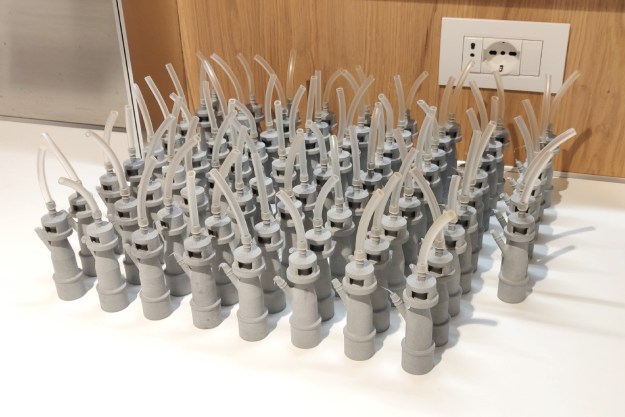
If we are what we eat, as the old adage goes, then the gastrointestinal (GI) tract is the organ system that brings us into being. Almost everything that passes into our mouth gets broken down in our stomach and absorbed in our bowels, before making its ignoble exit.
Our overall health and wellbeing is thus largely dependent on a properly functioning GI tract. From acid reflux and chronic fatigue to anxiety and depression, the GI tract is the nexus for a slew of health disorders. Patients suffering from GI problems sometimes need to spend long stays at a clinic, occasionally sedated, with a catheter inserted through their nose in order to monitor their internal goings-on.
But there may be another, less invasive option on the way thanks to engineers from the University of California, San Diego who have developed a stomach-based wearable that can monitor a patient’s GI activity from the comfort of their homes. The system records electrical activity in the stomach over a 24-hour period, using a 3D-printed portable box hooked up to ten electrodes.
“Diseases of the GI tract … are one of the most common complaints in modern medicine,” Armen Gharibans, a postdoctoral researcher at UC San Diego who worked on the project, told Digital Trends. “Most of these cases are called ‘idiopathic,’ which means doctors don’t know what it is or what to do. The system we developed allows you to continuously monitor the activity of the stomach in free-living subjects, without them having to undergo invasive procedures in the clinic. We believe this technology can facilitate a better understanding of the cause of these disorders and lead to new and more targeted therapies.”
The device works by measuring the electrical activity that causes stomach muscles to contract, break down food, and move it down the digestive process. It’s a similar to how an electrocardiogram (ECG) measures electrical activity in the heart. However, since the stomach’s electrical activity is ten times weaker than the heart’s, it’s difficult to reliably make these measurements without picking up noise from the surrounding body. Gharibans and his team developed a data-processing method to hear the stomach’s signal through the noise.
In a trial, the team used the device on eleven children and one adult volunteer, and found that the data was comparable to the data collected through state-of-the-art, invasive clinical methods.
Gharibans said the device is still in its research phase, and that he and his team will continue to refine the sensor configuration to further improve data collection, while miniaturizing the technology. A date for commercialization has not yet been set.
A paper detailing their work was published last month in the journal Scientific Reports.
Editors' Recommendations
- YouTuber claims that this ugly 3D-printed mouse is actually the best for gaming
- The future of making stuff: Inside the evolution of 3D printing with Formlabs
- This startup says it will be 3D-printing entire houses within a year
- Inside the quest to 3D print a perfectly palatable steak
- 3D printing lets hospitals make ventilator substitutes with common equipment


